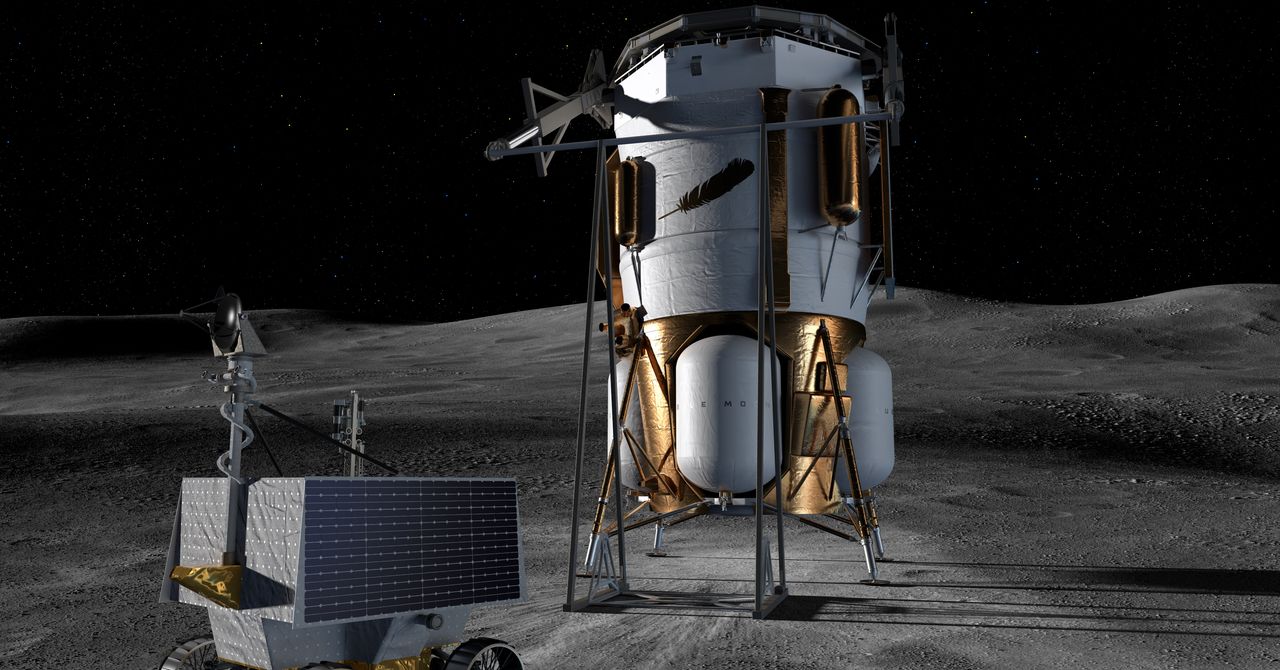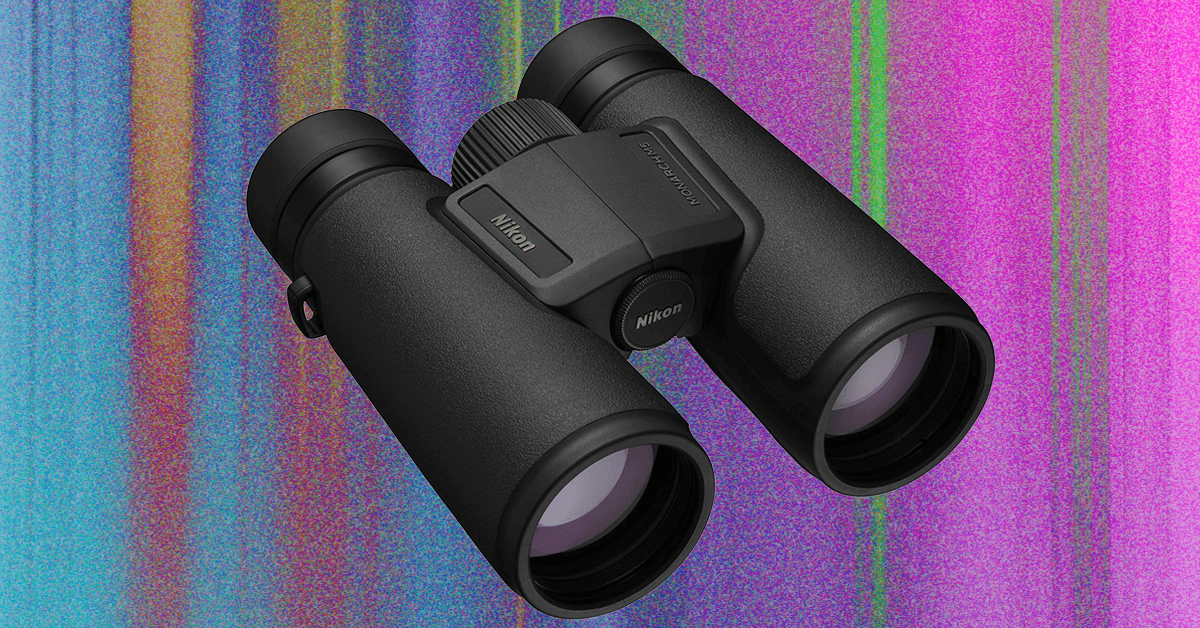Tech
Jeff Bezos’ Blue Origin Wins Contract to Take NASA Rover to the Moon

NASA’s VIPER lunar rover could be delivered to the moon by Blue Origin, Jeff Bezos’ aerospace company. The US space agency has awarded the company a task order to design a delivery plan for the rover, with a future delivery option.
The award, worth $190 million, was issued through NASA’s Commercial Lunar Payload Services (CLPS) program, which the agency is using to buy delivery services to the moon from private companies. The award does not directly imply a delivery agreement; first, NASA will verify whether Blue Origin is capable of successfully sending the expensive VIPER rover to the moon’s south pole. To be eligible to take on the VIPER delivery, the company must place its Blue Moon MK1 lunar lander—complete with a NASA technology payload—on the lunar surface by the end of 2025.
Blue Origin won this contract to send cargo to the moon in 2023, and designed the Blue Moon MK1 in order to fulfil it. On this mission, it will carry NASA stereo cameras that will conduct surface surveys, in addition to small spheres equipped with laser technology for mission tracking.
“There is an option on the contract to deliver and safely deploy the rover to the Moon’s surface. NASA will make the decision to exercise that option after the execution and review of the base task and of Blue Origin’s first flight of the Blue Moon MK1 lander,” the agency said in a statement.
On the same day as NASA announced the award, Blue Origin wrote on X: “Our second Blue Moon MK1 lander is already in production and well-suited to support the VIPER rover. Building on the learnings from our first MK1 lander, this mission is important for future lunar permanence and will teach us about the origin and distribution of water on the Moon.”
VIPER—which stands for Volatiles Investigating Polar Exploration Rover—has been designed by NASA scientists to explore the moon’s south pole for ice and other resources of interest. It is about 2.5 meters tall, weighs nearly 500 kilograms, and has a one-meter drill and three scientific instruments. The vehicle had been scheduled to launch in 2023, only for that date to be pushed back. Then, in the face of rising costs and further delays, in July 2024 NASA said it had cancelled the mission. The CLPS award to Blue Origin now appears to have revived the program.
The arrival of private space companies has the potential to reduce the traditional costs of space exploration while allowing mission managers to focus on scientific issues. Blue Origin, Firefly Aerospace, and SpaceX are just some of the companies that have emerged in this sector and won CLPS contracts with NASA.
“NASA is leading the world in exploring more of the Moon than ever before, and this delivery is just one of many ways we’re leveraging US industry to support a long-term American presence on the lunar surface,” said acting NASA Administrator Sean Duffy in a statement. “Our rover will explore the extreme environment of the lunar South Pole, traveling to small, permanently shadowed regions to help inform future landing sites for our astronauts and better understand the Moon’s environment—important insights for sustaining humans over longer missions, as America leads our future in space.”
This story originally appeared on WIRED en Español and has been translated from Spanish.
Tech
The Best Binoculars Will Help You Find the Ivory Billed Woodpecker

You get good magnification, with a waterproof (IPX7 rating) and fogproof design in a lightweight package (11.8 ounces). These also have two things that specifically make them great for kids: rugged construction and a nice, rubberized grip. I can’t tell you how many trees and rocks these have bashed into while around my son’s neck, and they’re still as good as new.
Stargazing Binoculars
When you think stargazing you probably think telescopes, but binoculars can work too, especially larger, higher-magnification models like these Celestron Skymasters. The first thing to know is that these are huge—most of the time you’ll want to use them with a tripod, which is not included in the price (they do include an adapter, which I used to put them on a photo tripod, which worked fine). The Porro prism design (see above), with 15x magnification and 70mm objective lenses, make these nice and bright, perfect for getting good views of the moon. They also work for larger clusters and nebulae. They do work for birding as well, but it’s more like using a spotting scope. They’re nice for digiscoping, though if you’re viewing something reasonably stationary, like water birds.
As with all Celestron binos there’s a nice big, smooth focusing knob, and they also have long eye relief which makes them easy to use with glasses. There is a fair bit of chromatic aberration, especially with bright stars or the moon, but I didn’t find it distracting. In fact, for the price, these provide surprisingly great views.
Image-Stabilizing Binoculars
Image-stabilized binoculars use electronics to smooth out your view, similar to what action cams do to get rid of jittery video. There are quite a few models out there, and we are still testing, but here are a few that have stood out from the pack so far.
Image-stabilized binoculars tend to be expensive, but Canon has quite a few budget models worth considering. They’re simple to use. You just tap the button on top for five minutes of stabilization, or tap again to turn it off sooner. The tech detects your movement and adjusts for it optically, in real-time. The Canon 8×20 IS, its smallest, is doubly pocket-friendly: They’re surprisingly affordable and fit in a large pocket. At 15-ounce plus battery, they won’t weigh you down.
The 8X magnification is good for wildlife and sports, as is the 10X magnification of the only slightly larger Canon 10×20 IS. The 6.6-degree field of view is narrow but wide enough for most situations.
Tech
Social Security Data Is Openly Being Shared With DHS to Target Immigrants

Last week, the Social Security Administration (SSA) quietly updated a public notice to reveal that the agency would be sharing “citizenship and immigration information” with the Department of Homeland Security (DHS). This data sharing was already happening: WIRED reported in April that the Trump administration had already started pooling sensitive data from across the government for the purpose of immigration enforcement.
This public notice issued by SSA makes that official, months after the fact. The notice is known as a system of record notice (SORN), a document that outlines how an agency will share the data it has, with whom, and for what purpose. This notice is required under the Privacy Act of 1974. Normally, SORNs are issued before any data is shared between agencies, giving the public and government officials sufficient time to offer comment. But WIRED found that the so-called Department of Government Efficiency (DOGE) was pulling in data from across DHS, SSA, the Internal Revenue Service (IRS), and state voter data, among other sources, based largely on the US Citizenship and Immigration Service’s (USCIS) Systematic Alien Verification for Entitlements (SAVE) database.
“There are laws that require the government to inform the public about their use of various kinds of databases and other surveillance technologies,” says Adam Schwartz, privacy litigation director at the Electronic Frontier Foundation, a nonprofit focused on digital privacy and free speech. “If the government starts using the database and does not put out the appropriate disclosure and then later does put out that appropriate disclosure, they still have violated the law.”
The Trump administration has gone to drastic lengths to remake the government in its image. A core component of this has been an effort to vacuum up large swathes of data from across federal agencies, many of which were never meant to be comingled. This has frequently happened regardless of the laws, norms, or procedures that normally govern the access and sharing of sensitive data. The SORN from SSA is just the latest confirmation of exactly how much data is being shared in ways experts tell WIRED is “unprecedented.”
Much of this data sharing begins with misinformation about the data at hand. In the early days of the Trump administration, Elon Musk seized on a misunderstanding of SSA’s data to spread the claim that 150-year-old people were receiving benefits. They weren’t, but DOGE capitalized on the idea that the SSA’s systems were inefficient and fraudulent to burrow into the agency’s data and technology systems. In April, reporting from The New York Times found that in an effort to force immigrants to self-deport, the administration was adding them to the SSA’s database of dead people, effectively meaning that their Social Security numbers could not be used to get jobs or access government services. As part of the effort to combine disparate data across the government to verify citizenship and surveil immigrants, DHS recently published a different but related SORN that effectively transforms SAVE into a voter verification system, which experts also warned could be bypassing the requirements of the Privacy Act.
Leland Dudek, who served as acting commissioner for the Social Security Administration between February and May 2025, led the agency when members of DOGE first appeared. Dudek says he was initially supportive of DOGE and acted as a bridge between SSA staff and members of the DOGE team before becoming disillusioned.
Tech
European Commission launches AWS and Microsoft-focused cloud competition probes | Computer Weekly

Amazon Web Services (AWS) and Microsoft’s dominant hold on the cloud computing market is to come under renewed scrutiny, with the European Commission (EC) set to investigate the pair’s activities under the terms of the Digital Markets Act (DMA).
The EC has opened two separate investigations into AWS and Microsoft, which seek to ascertain if the suppliers should be brought in-scope of the DMA by being designated “gatekeepers” in recognition of how much control they wield in the cloud computing market.
As per the terms of the DMA, gatekeepers are typically large tech firms that are able to control access to digital services markets and, in turn, make it difficult for smaller companies to gain a foothold in them.
They must also meet a specific set of market value, revenue generation and user number metrics to be labelled gatekeepers, and are expected to abide by rules set by the EC to encourage competition to thrive within the parts of the digital services market they operate in.
Failing to follow these rules can result in the commission issuing fines of up to 10% of a company’s annual revenue for a first-time violation, rising to 20% for repeat offences.
The EC said, in a statement, that it has decided to pursue this line of inquiry with both AWS and Microsoft, despite neither of them meeting the DMA gatekeeper thresholds for size, user numbers and market position.
The investigations will run for up to 12 months, the EC confirmed, with a final report on its findings set to drop within 18 months.
“Should the commission conclude Microsoft and Amazon fulfil the criteria to be designated as gatekeepers for their cloud computing services under the DMA, Amazon and Microsoft would have six months to ensure full compliance of their designated cloud computing services with the DMA obligations,” the EC said in a statement.
Computer Weekly contacted representatives from AWS and Microsoft for a response to the European Commission’s plans, with both firms returning statements that suggest they are confident the investigation will prove that neither has any case to answer.
In its statement to Computer Weekly, an AWS spokesperson warned that any attempt to label the members of the cloud computing community as “gatekeepers” may serve to stifle competition in the European tech market.
“We’re confident that when the European Commission considers the facts, it will recognise what we all see – the cloud computing sector is extremely dynamic, with companies enjoying lots of choice, unprecedented innovation opportunity and low costs, and that designating cloud providers as gatekeepers isn’t worth the risks of stifling invention or raising costs for European companies.”
Meanwhile, a spokesperson for Microsoft told Computer Weekly the company is ready to engage with the investigation. “The cloud sector in Europe is innovative, highly competitive and an accelerator for growth across the economy. We stand ready to contribute to the European Commission’s market enquiry,” they said.
Even so, Teresa Ribera, executive vice-president for the EC’s Clean, Just and Competitive Transition initiative, said cloud computing services are “vital for Europe’s competitiveness and resilience” but the market for them needs to be built on “fair, open and competitive terms”.
She continued: “That’s why today we are opening investigations into whether Amazon and Microsoft’s leading cloud computing services, Amazon Web Services and Microsoft Azure, should be subject to the Digital Markets Act’s obligations.”
She also confirmed the EC would launch a third related investigation into whether the DMA is an effective tool for tackling issues of anti-competitiveness and fairness within the European Union’s (EU) cloud computing sector.
This, she said, will look at whether the DMA’s existing rules should be updated so Europe can “keep pace with fast-evolving practices” in the EU cloud market.
This investigation will, the EC confirmed, involve seeking input from “relevant market players” to assess the effectiveness of the DMA to tackle issues such as obstacles to interoperability between competing cloud services and incompatible contract terms.
Nicky Stewart, senior advisor to the pro-cloud market competition advocacy group, the Open Cloud Coalition, welcomed the commission’s decision to probe the inner workings of the European cloud market, before sharing details of the specific areas the investigation should cover.
On this point, she specifically called out Microsoft’s controversial stance on charging customers more for running its software in competing cloud environments, which has already seen it subject to regulatory and legal scrutiny elsewhere in the world.
“These investigations are a good start for cloud customers. To achieve Europe’s sovereign ambitions, Microsoft’s anti-competitive approach to cloud licensing needs to be addressed as a priority,” she said.
“We also need to dismantle barriers to data portability and interoperability. These practices promote lock-in, undermine digital resilience and foreclose competition. The commission’s efforts have to address these issues if we want a thriving and competitive cloud market.”
News of the European Commission’s investigation into AWS and Microsoft comes hot on the heels of the UK Competition and Markets Authority (CMA) concluding its own anti-trust investigation into the two firms, as part of a wider probe into the inner workings of the UK cloud infrastructure services market.
-

 Tech1 week ago
Tech1 week agoFrom waste to asset: Turning ethanol production CO₂ into jet fuel
-

 Tech3 days ago
Tech3 days agoNew carbon capture method uses water and pressure to remove CO₂ from emissions at half current costs
-

 Politics5 days ago
Politics5 days agoBritish-Pakistani honoured for transforming UK halal meat industry
-

 Sports3 days ago
Sports3 days agoTexas A&M officer scolds South Carolina wide receiver after touchdown; department speaks out
-

 Business3 days ago
Business3 days agoThese 9 Common Money Mistakes Are Eating Your Income
-

 Tech1 week ago
Tech1 week agoSecurity flaws in portable genetic sequencers risk leaking private DNA data
-

 Fashion1 week ago
Fashion1 week agoBangladesh garment makers eye $5 bn more in exports post policy tweak
-

 Sports1 week ago
Sports1 week agoSteelers vs. Chargers (Nov 9, 2025) Live Score – ESPN














-SOURCE-Caramel-Quin.jpg)




